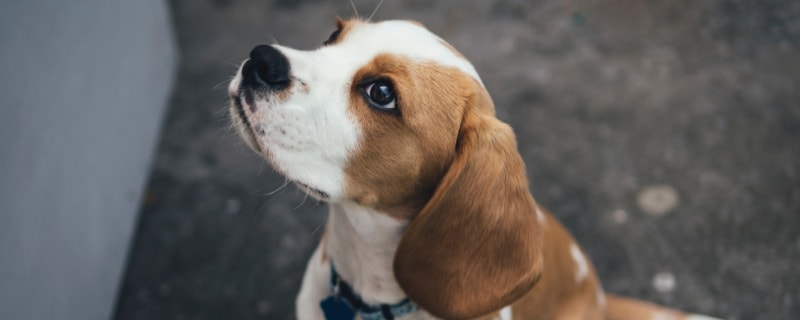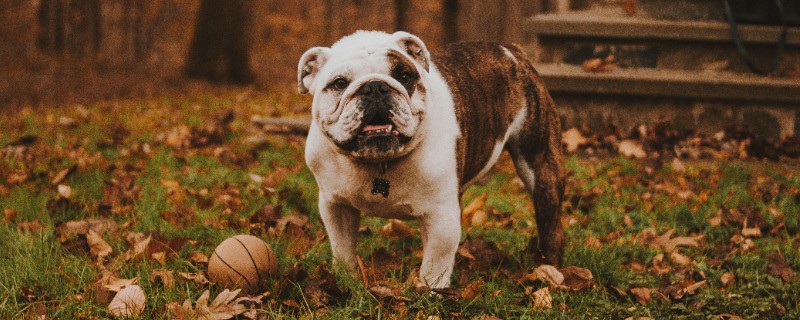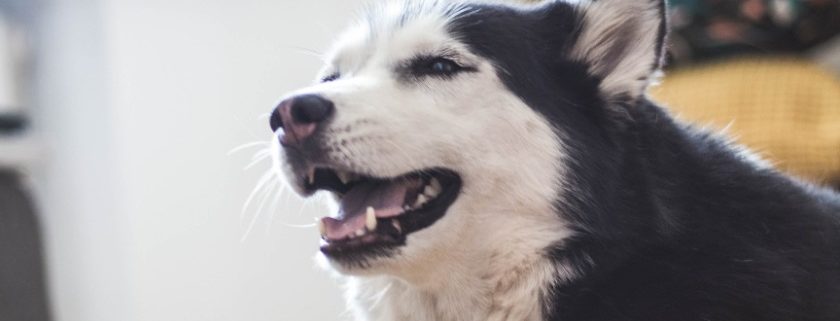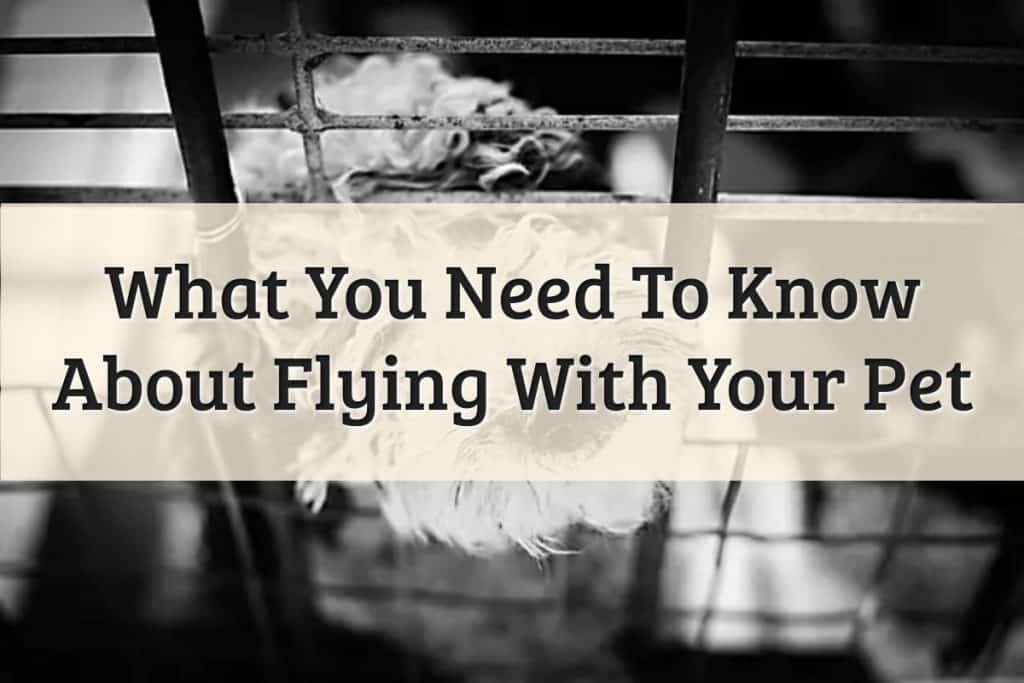It’s quite normal for dogs to take their time before defecating. Actually, there’s a scientific reason why dogs spend so much time sniffing around before they go about their business.
It turns out that dogs’ bathroom behavior is influenced by the magnetic field lines of the Earth. This is according to the study of Frontiers in Zoology when they explained that most canines prefer to poop with their spines aligned with the Earth’s North-South axis.
Another thing to consider is constipation which often causes delays and may be caused by some specific issues in your dog’s digestive tract. Dogs might also choose to hold on to their poop when uncomfortable or even when searching for a good pooping spot in new surroundings.
No matter the reason for the delay, as dog trainers, you’ll need to be well-prepared to speed up the process and move on to other activities.
Healthy Dog Poop Chart: What Does a Normal, Healthy Dog Poop Look Like?
Before we discuss some of the techniques to make your dog poop quickly, it’s important for pet owners to be aware what a normal dog poop looks like and if your dog has a healthy poop. In fact, your dog’s stools are one of the most vital and a great indicator of his overall health.
A highly useful tool to help you out is a healthy dog poop chart. Whether you like it or not, you will need to deal with your fair share of dog poop in your pet’s lifetime.
However, you might want to slow down a bit as you grab the pooper scooper and take a moment to learn more about your dog’s digestive health. Your pup’s poops can reveal a great deal about his health, so it’s crucial to know exactly what to look out for.
Even making natural pet food recipes take too much time since inspecting a pooch’s poop also helps gain insights into how various ingredients can affect a dog’s digestive system. Surely, most dog owners will agree that the less time you spend examining your dog’s poops the better, right?
That’s why, this healthy dog poop chart is a good way to go–it’s complete with a checklist for healthy dog poo and a dog poop color chart.
How to Spot the Perfect Poop?
Just like humans, all canine pets are different. Their toilet habits varies as well. With that in mind, it’s essential to get to know your dog (or your new pup) as soon as possible and understand what is normal for them.
That way, you’ll can recognize any changes in your dog’s stool. While there can be a tiny differences depending on the dog and the type and amount of food the pooch consumed, this healthy dog poop chart covers some thing to look out for that are a sign of a healthy poop.

Monitor Your Dog Poop Consistency
When cleaning up your dog’s poop, a lot of pet owners do not like to think too much about what is inside the plastic bag they’re holding. But it’s significant to consider your dog poop consistency as you pick them up, as this can be a sign of other issues.
Healthy dog poop should be moist, compact, and holds its shape when picked up. Watery poos or runny poos could be a sign of intestinal upset–perhaps your dog ate something he shouldn’t. Likewise, if your dog’s poop feels too dry or hard, your pup may be suffering from constipation or dehydration (your dog might not be drinking water).
If you notice a change in your dog poop consistency, be sure to speak with your vet about it. If you’ve recently switched to a new dog food, it is normal to expect some dog’s poop variation in the first few days (about 2-3 days) so don’t fret.
If things haven’t settled down after 2 weeks, though, then you need to review. Usually, it’s a case of feeding too much dog food. Therefore, try reducing your pup’s dog food into small amount next time and see if that helps.
Check the Poop Size
It goes without saying that the size of your dog’s poop depends on the size of the pooch itself. There’s no way a Chihuahua will produce much dog’s poo as a Golden Retriever!
But generally speaking, your dog’s waste should be about the same size as the portions of dog food he is eating. Pups who are fed a diet of fresh food, for instance, will likely produce poops that are less smelly and smaller in size since the food is being absorbed more effectively into the dog’s body. However, large amounts of dog poop is due to processed kibbles. Kibbles typically contain high amounts of carbohydrates and dietary fibre, such as beet pulp, soybean, and rice hulls.
The key element to look out for in terms of your dog’s poop size is any noticeable changes. Larger than the normal dog stool might mean undigested food or the dog food consumed isn’t being digested as it should, and your pooch is not getting the necessary nutrients out of it. Smaller dog stools, on the other hand, could be a sign of a loss of appetite due to an illness or a blockage in your pup’s digestive process.

Be mindful of your Dog’s Poop Frequency
Whether it’s once or four times a day, the number of times your dog poops per day should be consistent. As long as the dog’s poop frequency is the same every day, there’s no need to panic. Often, most dogs will go once or twice per day while other dogs may go four or more times!
It’s essential to pay attention to how many dog poos you are scooping each day to understand how your pup is doing. If he goes from being a regular once-a-day pooper to needing to go four to five times, he could be having some digestive issues and requires to see the vet.
Observe Any Unusual Color
When it comes to dog poop, the main tell-tale sign that there’s something wrong with your dog’s poop is its color. You may not have to keep a close eye to detect a color difference, so there’s less inspection needed.
Anything other than light brown or dark brown may be a cause for concern. If the color is chocolate brown, however, it’s a good sign that your pooch’s tummy is in good condition and doing what it should.
Your dog food of choice may also have some food colorings (so it is advised to switch to new dog food as this is unnecessary in pet food). Make sure to check the ingredients list in the new food as this may affect the color of a pooch’s poop.
Becoming a doody detective and knowing what specific issues could be affecting your dog’s poop color when they look unusual is important information.
- Green dog poop– Green-colored poop may be a sign of a gall bladder issue. Besides his gallbladder issue, if your dog is fond of eating grass, then the green stool might be due to your dog consuming too much grass. This could also indicate stress or intestine troubles.
- Orange/ Yellow Dog Poop – This may indicate biliary, pancreas, or liver problems which all require veterinary attention. But if your dog ate some carrots, that could be another common cause of orange color in your dog’s waste.
- Red Dog Stools– Red streaks commonly mean there is blood in your dog’s poop. While blood present in your dog’s poop shouldn’t be a cause to panic, its causes can range from relatively minor to extremely serious. A minor issue will be because your dog’s poop is too hard which causes abrasion when they’re coming out. However, when your dog has constipation or diarrhea, comes with bright red blood, lasts more than 2-3 bowel movements (or more than 2 days) and if your dog experiences fever and other symptoms like vomiting, not eating or drinking water for more than 24 hours or behavioral change, then you need to visit the vet immediately.
- Tarry/ Black Dog Poop – Black poop may indicate an issue in your dog’s small intestines. Usually, it’s a sign of internal bleeding coming from the initial stages of the digestive tract like the dog’s stomach or small intestine.
- Greasy/Grey Dog Poop – This color and texture combination are often seen together, and they are typically indicative of a digestive issue, such as biliary or exocrine pancreatic insufficiency (EPI).
- White spots – White, rice-like grains in your pup’s poop could be an indication of tapeworms, which will need treatment.
- Chalky/ White Dog Poop – This is typically observed in dogs with a raw diet and typically means your dog may have an excess of calcium and other minerals. Keep an eye on your pup, and if you notice white dog poops for more than two bowel movements, then discuss it with your vet.

Inspect your Dog Poop’s Shape
Typically, your dog’s poop should be log-shaped and maintain its shape when moved or picked up. There are various types of poop issues along with their meanings. These include:
- Watery Poo– As the name implies, this is when a dog’s poop normal shape from solid becomes a watery poop or squirts of liquid. Some of the causes for this can be food-related (a sudden switch to a new food), medication, early signs of disease, or it could be some stressful event like a change in environment or a new family member.
- Soft, Loose Stools– Loose stools happen when there is a sudden change of new food to the dog’s diet and that the dog is not accustomed t0 the introduced new food. A loose stool can also occur if the dog is only given a variety of dog food. If you’re worried about your dog’s loose stools, try introducing his new dog food bit by bit.
- Mucus in or around the dog’s poo– Common issues for slim or mucus coating may be due to an inflamed colon or large bowel inflammation in the gut. It may also be due to parasites or parvovirus. While it is advisable to be cautious, there is often a good chance that the mucus will clear up after a few rounds of bowel movement or for a couple of days. Try to give your pooch 1-2 days to restore balance in its body on its own. If couple of days have passed and your dog’s poop still has mucus, get in touch with your vet.
- Formless Stool–This means the large intestine is not properly re-absorbing water. The ideal dog poop is easily squishable, the consistency of Play-Doh, and hold its form without melting into the grass after picking it up with a pooper scooper.
- Very hard, pebble-like–This is not a positive sign for your dog and not a good sight either. Some of the more common causes for this type of dog poop issue include:
a) Food related–Dry dog food diets or kibbles are often too high in dietary fibre and lacking in moisture causing the dog’s poop to be hard.
b) Not drinking enough water–Your dog may be feeling dehydrated.
c) External body condition–There may be inadequate grooming specifically at the back end, which means matted hair near the backside which makes defecating difficult.
d) Habitual reasons–Lazy pooches who don’t have enough exercise can also pass out hard dog poop. Same for those who excessively groom themselves, and you can see if the dog’s poop has dog hair.
e) More serious issues– There might be an infection in the anal glands, or some hard foreign objects stuck in the intestinal tract, such as gravel, bones, or plastic that are hard to detect. If you have ruled out the above causes, then it may be best to seek your vet’s advice as it may lead to more serious diseases such as Irritable Bowel Syndrome.
If you have a senior dog who suffers from joint issues, he may not be able to stay in the right position for long enough to produce a perfect poop (sometimes only less poop is passed out). In this case, you may want to call your vet and give him something to soften his poop (more about this later) to make things a bit easier.
3 Hands-On Methods To Make Your Dog Poop Instantly
While some dog owners might find expressing a dog’s bowel to be intrusive, one or more of these home remedies can come in handy, and most importantly, save you a lot of time. Expressing your dog’s bowel entails several techniques as discussed below.
1. The Ice Cube Technique
Using ice cubes is a straightforward way to relieve dogs with constipation. You won’t require several items when using this technique, but the results will truly amaze you.
Things You’ll Need To Prepare
- Ice cubes
- Disposable gloves
Step By Step Instructions
- Take an ice cube holder from the freezer and place it in the preferred bathroom spot for your dog
- Embrace your dog and preferably pat him to reassure him that all will be well despite the discomfort that’ll follow
- Put on your gloves and take an ice cube from the tray
- Lift your pet’s tail using your fingers to clear the pathway to his anus
- Place the cube carefully on your pup’s sphincter and maintain it for close to half a minute
When the ice cube is positioned on the dog’s sphincter, the discomfort will see him attempt to shove it outside, which consequently leads to contraction. Once he pushes the ice cube out, expect to see your dog pooping, and voila – you are good to go.

2. Water Squirting Stimulation
Water squirting is a solution that aims to stimulate bowel movements and relieve constipated dogs. While the cool water might be uncomfortable at first, your dog will be thankful that you helped him relieve himself.
Things You’ll Need To Prepare
- Disposable gloves
- A clean source of water
- A hosepipe/squirt bottle
Step By Step Instructions
- First, determine the area you want your dog to poop, then have him in a good position
- Open the clean water source and regulate the water pressure (if using a hosepipe)
- Place a good level of cool water in the squirt bottle (if using a squirt bottle method)
- Confirm the water temperature is cold enough to shock your dog’s butt (not freezing cold though)
- Aim at your dog’s anus, observing the pressure levels to avoid hurting him
- Repeat severally until your dog starts pooping
Squirting water on your dog’s anus is one way that will get the job done, especially if your dog is constipated. But for this method to work, you’ll need to use cold water (slightly above normal) to shock his anal cavity and stimulate a dog to poop. This technique is recommended for dogs that are full and ready to relieve themselves but are experiencing difficulty.
3. The Squeezing Technique
Before trying out this technique, you should be prepared for significant resistance from your constipated dog. While these animals love contact and being patted regularly, the same can’t be said about grabbing and forcing the dog’s poop out of their anal cavity.
Things You’ll Need To Prepare
- Squeaky clean disposable gloves
- Box of tissues
Step By Step Instructions
- Using your fingertips, gently press the soft tissue located just around the anus
- Firmly grip the soft tissue and gently spread your forefinger and thumb (1 ½ inch apart)
- Press inward (gently), while still spreading the soft tissue to stimulate the opening of the rectum
- Increase your spreading pressure depending on the quantity of feces dropping
- Gently massage until your pup removes all poop
Disclaimer: Since you’ll be extra close to your canine companion when applying this technique, be prepared for the unpleasant smell of your dog’s poop droppings. Having a box of tissues will come in handy to cover the feces and reduce the smell.
When using this technique, it is advisable to pay close attention to your dog’s behavior, especially his reactions. If he appears to be in great discomfort, chances are you’re pressing too hard on his soft tissues, and the last thing you want is prolapsing his rectum or causing irreversible damage to his colon’s mucosa lining.

The Dietary Method to Make Your Dog Poop Quickly
If you want to know how to make a dog poop instantly using a less hands-on but nonetheless effective way, consider integrating one of the following suggestions into his diet.
Adding Mineral Oil Or Olive Oil In Dog’s Food
Mineral and olive oils are great dog constipation relievers. To make use of them, incorporate a considerable amount into your dog’s diet. While you can administer these oils directly to your pooch, mixing it in food is recommended. Not only does it allow for easy consumption, but it also acts as a stool softener for dogs.
Switching To Canned Dog Food
Canned dog foods can help ease your dog’s constipation problems. Most canned dog foods will add natural moisture, making digestion and excretion a breeze for your dog. You might want to consider switching from kibble to wet dog food recipes since canned foods are usually pasteurized and help to soften dog stool thus treating constipation.
Good nutrition practices also help to treat dehydration and grooming problems. Canned dog products have several benefits and can increase the frequency of stools regardless of breed.
Including Pumpkin In Dog’s Food
Pumpkin contains soluble fiber, which absorbs water in your dog’s body, consequently adding bulk to your dog. Including canned pumpkin in your pet’s diet will also improve his digestion. The fiber, once fermented, produces crucial fatty acids that stimulate sodium and water absorption in the intestines, consequently lowering the pH levels. [1]
Canned pumpkins, similar to a gentle belly rub, improve your dog’s bowel movement, and help him go to the bathroom. Most veterinarians recommend adding bits of pumpkin to soothe digestive and abdomen problems associated with canines.

Frequently Asked Questions
Is milk a laxative for dogs?
Yes, milk is considered a laxative for dogs and other pets. Thus, if you’re thinking about how to stimulate a dog to poop, just know that it doesn’t work well as a constipation remedy for them.
Since most pooches are lactose intolerant, giving your dog milk might lead to stomach complications and stress his digestive tract to the point of diarrhea. Even if a dog is not lactose intolerant, be sure to administer dairy pet products in small quantities to prevent stomach upset and other health complications.
Can I give my dog human laxatives?
No, you cannot give your dog human laxatives. You’ll find that laxatives intended for humans are stronger compared to dog laxatives. Therefore, administering your laxatives to your dog will almost certainly lead to medical complications. As a result, it is advisable to use vet-recommended laxatives on your dog.
And since all pets suffer from constipation at one point in their lives, taking up alternative methods like changing diets is recommended as opposed to playing a doctor on your dog. Be sure to use quality, vet-recommended medication when administering home treatment for symptoms of tract illness.
Does walking a dog help them poop?
Yes, walking a dog can help especially if there is somewhere specific he associates with relieving himself. Consequently, it is advisable to walk through the same area when your pup is dealing with constipation since exercise helps to stimulate rectal contractions.
Do you know how people get extra pressed just when they are about to get to the toilet? Exactly, dogs behave the same way and will feel like relieving themselves once they are in an environment they relate to pooping.
If you notice that your dog has a problem with relieving himself on walks, ensure that you make him comfortable with the routine and encourage him to poop. A simple command should do the trick – after all, you are a dog owner.
But you’ll also want to make sure to stay outside long enough to allow your dog ample time to go about his business and exercise – now, that’s good dog care. Remember to give your pet treats as a reward when he changes his patterns and overcomes the disorder.
How often should a dog poop?
There is no specific amount of times that a dog should poop in a day. Small breeds and large breeds tend to have different digestive systems, making it impossible to come up with a magic number. However, consistency is key.
Your dog should poop the same number of times every day. That is, if he poops twice a day, then he should poop twice a day every day. Some dogs tend to poop twice, others thrice while others can even go up to four times.
It all depends on his diet and of course, activity. As pups might experience distress in the elimination of stool, you’ll need to practice patience and provide extra care to help your puppy overcome his potty issue during house training.
Conclusion
Constipation in dogs is common and is often caused by insufficient fiber in their diet. Also, since dogs love to nibble at anything that looks edible, these pets will often eat toys, hair, and even kitty litter, which might stress the digestive system leading to blockages.
If you choose to go military and make use of the hands-on methods, be sure to prioritize hygiene as you don’t want to infect your pup. Make sure you put a glove on when touching his anus or soft tissues.
And if you opt for the more sustainable dietary technique, it is advisable to incorporate the best types of canned dog foods in meals that contain natural moisture, which helps to ease a dog’s digestive process, making pooping a breeze. Whichever option you prefer, remember to give your dog enough time to relieve himself when out on daily walks.




